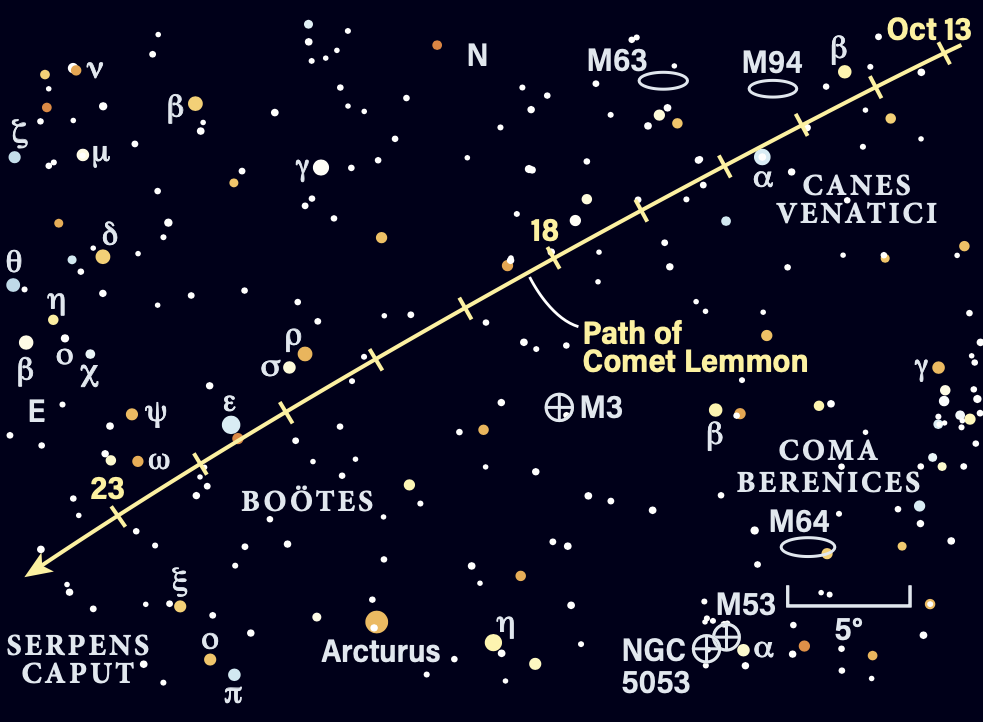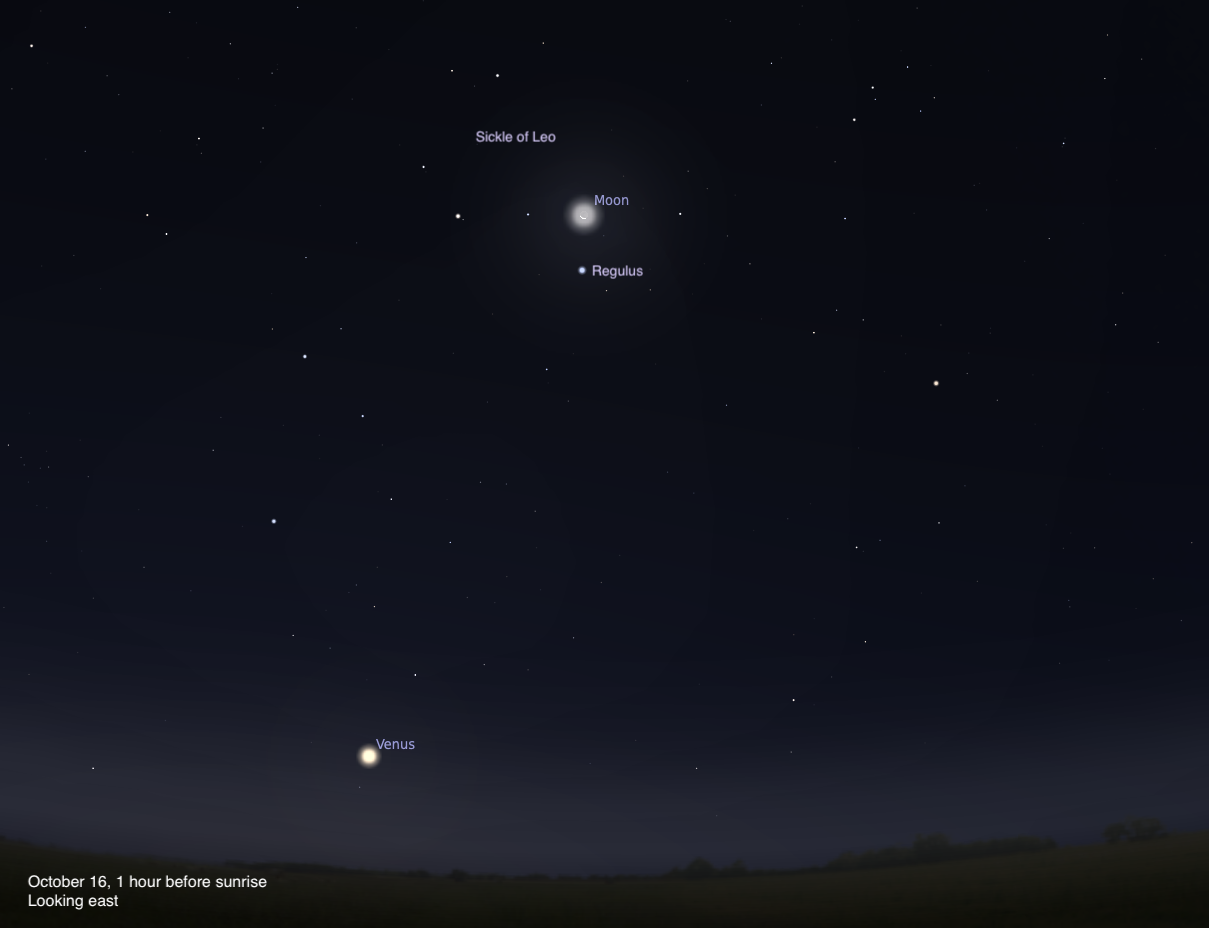Back to Article List
Comet C/2025 A6 (Lemmon) is visible in the hour and a half before sunrise, now in the northeast in the constellation Canes Venatici.

This chart shows the path of Comet Lemmon from Oct. 13 to 23. Note that only deep-sky objects 8th magnitude or brighter are shown. Credit: Astronomy: Roen Kelly
- Comet C/2025 A6 (Lemmon) is currently observable at magnitude 5.7 in the predawn sky within Canes Venatici, positioned approximately 1.5° southeast of Chara, with its closest approach to Earth and anticipated brightest illumination on the 21st.
- Observational recommendations for Comet Lemmon include binoculars, low-power telescope eyepieces, smartphone long exposures, and deeper astrophotography that may reveal a green coma produced by diatomic carbon excited by sunlight.
- On October 16, the waning crescent Moon will be visible near Regulus in Leo approximately an hour before sunrise, with Regulus identified as a magnitude 1.4, four-star system that anchors the Sickle asterism.
- The article provides specific local times for sunrise (7:11 A.M.), sunset (6:20 P.M.), moonrise (1:07 A.M.), and moonset (3:51 P.M.), alongside the Moon’s 26% waning crescent phase, for a 40° N 90° W location, and mentions looking south for Pluto and M75 on October 14.
Looking for a sky event this week? Check out our full Sky This Week column.
October 14: Look south for Pluto and M75
Comet C/2025 A6 (Lemmon) is currently making a splash across the sky, recently observed at magnitude 5.7 and visible in the predawn sky about an hour and a half before the Sun rises.
This morning the comet is in Canes Venatici and reaches some 25° high an hour before sunrise. Step outside and look northeast to locate the Big Dipper, now standing on the end of its handle. To the right of the handle is Canes Venatici, and Lemmon is just under 1.5° southeast of the constellation’s beta star, 4th-magnitude Chara, this morning.
You’ll need at least binoculars to spot Lemmon. If you’re using a telescope, Astronomy Associate Editor Michael Bakich recommends starting with a low-power eyepiece and working your way up once you’ve found the comet. Taking a long sky exposure with a smartphone may also pull the comet out of the background, so give that a try if you’re familiar with the night photography settings on your phone. Deeper astrophotography using a camera attached to your telescope may show the coma’s green glow, generated by diatomic carbon, which glows green when excited by sunlight.
Comet Lemmon will be closest to Earth on the 21st and likely shine brightest at that time. You can find additional finder charts and more tips on how to observe it here, and we’ll make sure to revisit it in this column throughout the month.
Sunrise: 7:11 A.M.
Sunset: 6:20 P.M.
Moonrise: 1:07 A.M.
Moonset: 3:51 P.M.
Moon Phase: Waning crescent (26%)
*Times for sunrise, sunset, moonrise, and moonset are given in local time from 40° N 90° W. The Moon’s illumination is given at 10 P.M. local time from the same location.
Tomorrow morning, October 16, the waning Moon has moved into Leo and stands close to Regulus, the Lion’s bright heart, in the early-morning sky today. An hour before sunrise, they are 40° high in the east, with the crescent Moon just to the upper right of Regulus.

See the crescent Moon nestled near the Sickle of Leo before dawn on October 16. Also visible closer to the horizon is Venus. Credit: Stellarium/USGS/Celestia/Clementine
Magnitude 1.4 Regulus shines some 150 times brighter than the Sun. It is not one star but a four-star system; the easiest companion to spot in a telescope lies 175” away and shines at 8th magnitude. This is itself a double, though the faint companion here requires a very large scope to view (it’s magnitude 13.5). The fourth star in the system is a white dwarf companion to the brighter Regulus A and cannot be seen.
Regulus anchors the asterism known as the Sickle, which outlines Leo the Lion’s regal head. This group of stars looks like a backwards question mark in the sky; see if you can spot it as well, even with the Moon nearby.